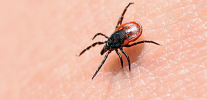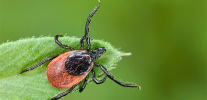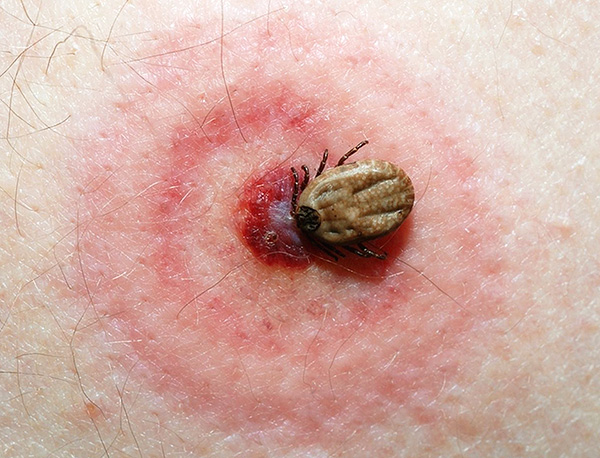
On the territory of Russia, more than fifty species of ixodid ticks live, the most widespread and widespread among which is Ixodes ricinus (which is also called a canine, European forest or common ixodic tick). People often call this species Borreliosis mite, since it is the main carrier of a dangerous infectious natural focal disease, Lyme borreliosis.
The photo below shows such a tick, sucked to the human body:
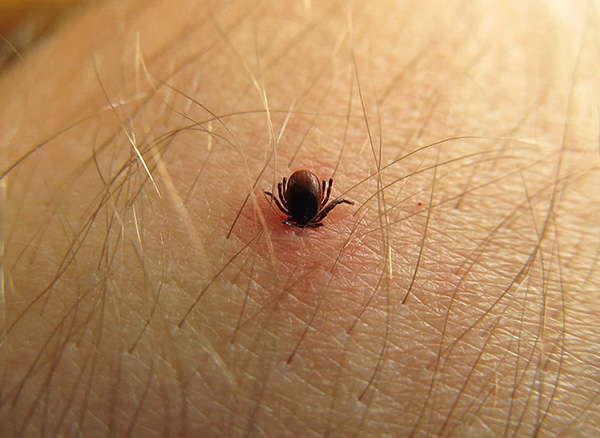
On a note
In terms of morbidity, borreliosis takes a leading place among natural focal infections and is one of the important problems of modern medicine, leading in terms of the prevalence rate in most countries of Europe, Asia and the USA. Borreliosis accounts for approximately 90% of all diseases,carriers of which are arthropods.
Every year, only in Russia, about 8,000 cases of human Lime Borreliosis are recorded. It should be borne in mind that without proper treatment, the disease can be deadly.
About the dangers of Lyme borreliosis, the nuances of infection through tick bites and ways to prevent serious consequences - we will talk more about all this later ...
Spread of Lime Borreliosis
Tick-borne borreliosis is a very serious infectious disease, extremely dangerous for humans. In medicine, use a number of synonyms:
- systemic tick-borne borreliosis;
- Lyme disease;
- Lyme borreliosis;
- chronic migrating erythema;
- tick erythema.
Some of these names briefly describe the symptoms of the disease, which, generally speaking, can vary in severity over a wide range. Because of this, the disease is often incorrectly identified and not prescribed the necessary treatment in time. This fact explains the fact that the causative agent was discovered and described relatively recently - at the same time the role of ixodid ticks in the transfer of pathogens from wild animals to humans was also studied.

On a note
The name of the disease comes from the city in which there was a massive outbreak of human morbidity (Lyme, Connecticut, USA). The clinical picture was reminiscent of arthritis, but this hypothesis was quickly ruled out, since most of the cases were of a young age.
Only in 1977 it was revealed that the mysterious disease is associated with ticks. After examining ticks of the genus Ixodes, experts found in their body a pathogen, the spirochete. But as a separate, independent disease, Borreliosis was registered much later, only in 1984.
Sometimes an infected tick is called a Lyme tick by ordinary people, believing that "Lime" is the name of a scientist who was studying the disease. In fact, this is a big mistake: Allen Steer was studying the problem, and the word "Lime" refers to a small town in which cases of illness were recorded.
At this stage, tick-borne borreliosis is widespread in the United States, Europe, Australia, in several countries in Africa, China and Japan. Russia is not an exception from this list - the disease is found in many regions of our country. At the same time, experts note that the cases of human infection with Lyme disease are increasing every year, and there is even an opinion that borreliosis is second only to AIDS in terms of its spreading rate.
If you look at the distribution map of tick-borne borreliosis, you can see that the boundaries clearly coincide with the boundaries of the distribution range of the dog tick.
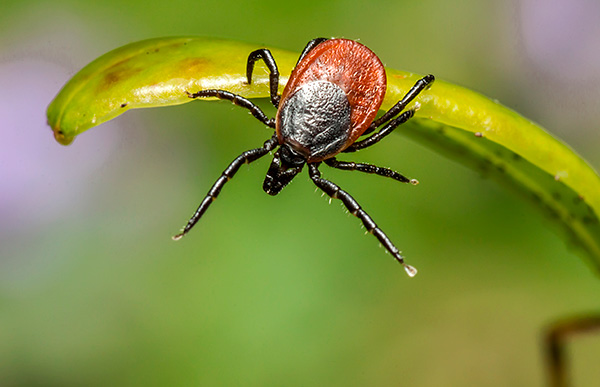
The fact that an ordinary forest mite plays a primary role in maintaining the source of this disease is currently an indisputable fact. At the same time, of course, not every tick in a potentially dangerous area is Borrelia (that is, it carries spirochetes), but this probability is always present in most regions of Russia.
Natural reservoirs of the disease and the entry of the pathogen into the tick
Spirochete Borrelia burgdorferi (named after its discoverer) is the causative agent of Lyme disease. It was isolated from the lymph, blood and cerebrospinal fluid of sick people. After some time, the bacteria were found in the organs and soft tissues of some animal species (deer, small rodents, birds).
The photo below shows what Borrelia looks like at 400x magnification (laboratory samples painted with silver salts for contrast):
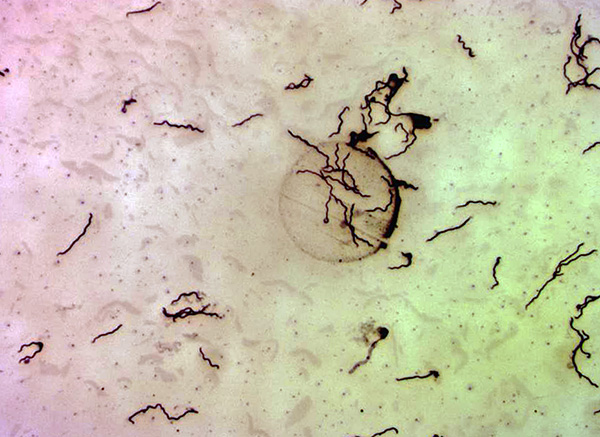
In the end, Borrelia was extracted from the ixodic tick from the digestive tract.Thus, the leading role of ticks in the transfer of the pathogen from wild animals to humans was proved.
Borrelia in the natural environment is found exclusively in the body of the natural host. Experts include about 200 species of animals that are natural reservoirs of this species of spirochetes. The main ones are deer, dogs, cats, cattle, small mouse-like rodents (voles, gerbils, parsley, hamsters) and a large number of birds belonging mainly to the family of Passeriform.
On a note
Spirochetes are found in many tissues and organs of the host, but the greatest concentration of borrelia is found in the blood and lymph. So they circulate in the host for quite a long time, and at a certain stage the contact of the focus with the carrier - ixodic tick can occur.
Borrelia along with the blood of the animal on which the tick feeds, enter the body of the parasite. First, for a while they are in the intestines of the tick. Then (after about 5-6 hours), the spirochetes migrate through the esophageal membrane to the hemolymph (an analogue of our blood) and spread throughout the parasite's body.
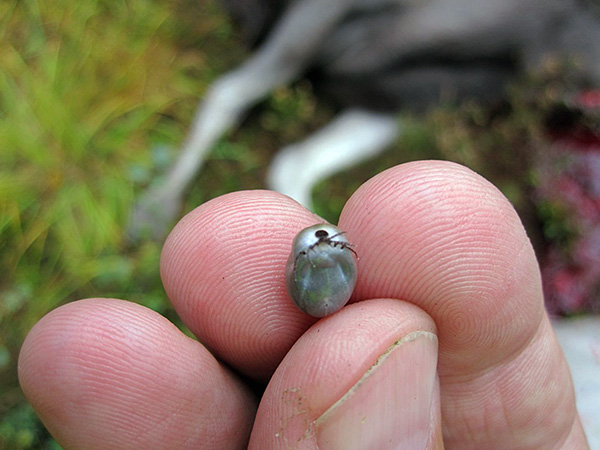
However, the density of borrelia tick organsunequal: their greatest number is contained in the salivary glands and malpighian vessels (organs of excretion) - this circumstance plays a primary role in the transmission of the pathogen from tick to man.
On a note
Ticks are the universal carriers of spirochetes and some other causative agents of dangerous diseases. Microorganisms, along with blood, enter the intestine of the tick, from where they migrate throughout its body. The internal environment for temperature and pH is favorable for the vital activity of the pathogen, and the absence of a special membrane in the intestine, like in insects, allows bacteria to freely penetrate into any tissues and organs of the parasite.
As noted above, not every ixodid tick is borrelio. That is, tick borne pathogens will not necessarily be contained in the body. For example, if the parasite did not feed on sick animals, then it is epidemiologically pure.
Ixodes - the main carriers of Lyme disease
The dog tick is one of the main carriers of Lyme disease in Russia and, accordingly, plays a key role in the territorial spread of the infection.However, not only can he carry borrelias in himself.

Spirochetes were also found in the body of the taiga tick Ixodes persulcatus (the so-called encephalitic tick), as well as other members of the genus Ixodes:
- I. dammini;
- pacificus;
- I. scapularis;
- tanguliceps.
However, these species are either not found in Russia, or are relatively small, and therefore do not play an important role in the spread of the disease.
Below in the photo is a taiga tick (for a non-expert it will not be so easy to distinguish it from a dog):

The dog tick lives almost everywhere in the territory of our country (mainly in large forests). Population density is uneven and is rather local. Mass outbreaks of the parasite population are periodically observed, with the tick being most active in spring and autumn.
The life cycle proceeds according to the type peculiar to all Ixodes and consists of four stages:
- Egg;
- Larva;
- Nymph;
- Adult individual (imago).
The female lays eggs in the spring on grass or another substrate, then the larvae develop in them.
The photo below shows the dog mite eggs:

After the larvae hatch from the eggs, they begin an active search for the host.At this stage, the mites parasitize mainly in small rodents, which are natural reservoirs of borreliosis. Already in this period, the transition spirochaete to the tick.
Having drunk, the larvae go for wintering or molt in the nymphs.
On a note
The mite nymph differs from a larva in the number of pairs of legs - the nymph has 4, and the larva has only 3.
For further development, nymphs also need to be pumped with blood, and they choose victims from larger wild animals, or birds, which may also contain borrelia in their bodies. The constant need for all stages of the mite's life cycle in the diet increases the chances that the tick will be saturated with the blood of the sick animal and become “borreliotic”.
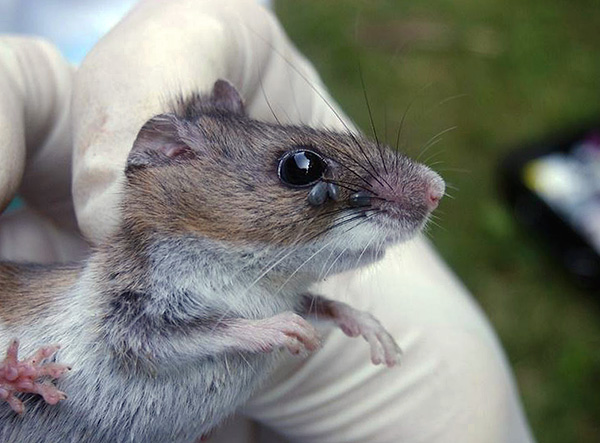
After the winter diapause, the nymph molts into the imago.
It is interesting
Borrelia are in the body of the tick from the moment it gets into it, along with the blood of a sick animal. In the process of development, the tick sheds, and complex reorganizations occur in his body, but this does not affect the viability of the spirochete. Even after a long time, the Borreliosis mite remains infectious.
Borrelia is capable of being in a metabolically inactive state in the midgut of ixodic ticks for a long time (for example, during the parasite's wintering time).After the tick is sucked in and the first portions of blood enter its gastrointestinal tract, borrelia begin to actively proliferate.
The adult tick has an oval body, covered with a shiny shield on top. In females, the shield occupies 1/3 of the dorsal surface, in males it completely covers the back. Both females and males can be carriers of tick-borne borreliosis.
The externally infected tick looks absolutely identical to the non-infected individual. Morphologically, it is also impossible to distinguish them. To determine whether the tick is a carrier of borreliosis, it is necessary to conduct special laboratory tests.
How does a person become infected with borreliosis
Currently, in addition to natural foci of Lyme disease, anthropogenic forms are also being formed, where the disease circulates not only between ticks and wild animals, but is also relatively often transferred to humans. A carrier of infection is found in park areas, in squares and on the streets of cities and towns, where infection may well occur.

Ticks are found in almost all plant communities of the city. But the largest number of them is observed along the edges of forest roads and paths, on overgrown clearings, in ravines and gullies, on floodplains of rivers.
Usually, a person is bitten by adults only of ticks (imago), the probability of infection, from which is much higher. However, cases of human infection from nymphs are recorded. In general, it is not so important at what stage of ontogenesis the tick became a carrier of Lyme disease: if it is bitten, the causative agents of the disease can get into the victim's body.
The tick's disease is transmitted by transmission when, when a person is bitten by a tick, pathogens pass into our circulatory system. The mite releases a large amount of saliva into the wound to prevent blood from coagulating. Together with saliva, borrelia also enter the human body.
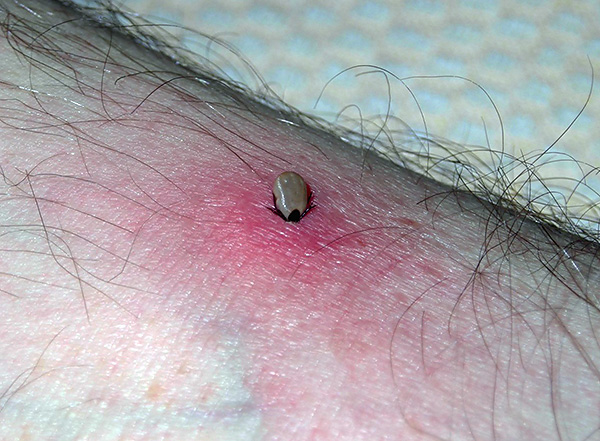
If a Borrelia mite just crawled through the body, but did not have time to bite, then no infection will occur. (although there are rare exceptions).
On a note
Pathogens of borreliosis can get into our body and otherwise. Since a large number of Borrelia is found not only in the salivary glands of the tick, but also in the excretory organs - malpighian vessels, there are also a large number of them in the parasite excrement. With long-term feeding on a person, the tick defecates, and spirochetes can enter the body through damaged skin.
Thus, the longer the tick is on the body, the higher the chance of infection. However, even with the bite of a Borrelia mite, a person may not get sick, because our body has immune defense reactions. As a result, according to statistics, the probability of infection with Borreliosis with a tick bite is approximately 5 cases per 100 episodes of suction.
The clinical picture of the disease: its symptoms and danger
Initially, pathogens in large quantities are concentrated at the site of the bite, thereby causing a local immune response. In the center of the bite appears a bright red spot (erythema), which increases in diameter - sometimes up to 5 centimeters or more. This is the first and most obvious sign of infection of a person with borreliosis.

Erythema can migrate through the body: more often it develops in the thigh, in the inguinal and axillary regions. At this stage, the person is usually not worried about fever and other characteristic symptoms.
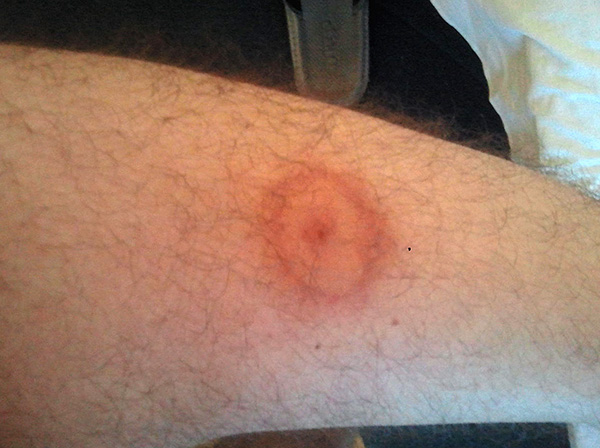
It has now been proven that erythema migrans is an essential clinical sign of Lyme borreliosis. (although it is not always noticed in time by patients, which may make it difficult to diagnose when the infection passes to the next stage).
The second stage of Lyme disease develops around the second month after infection and is characterized by the defeat of several organs and systems at once:
- skin cover;
- musculoskeletal system;
- of cardio-vascular system;
- nervous system.
The skin lesion is manifested most quickly and is expressed in a large number of erythema and subcutaneous nodules on the body, which often disappear and appear, as well as change their localization. There is pain in the joints (as with arthritis), the patient feels a breaking pain in the limbs. Pains can change their location and disappear as suddenly as they arise.
The defeat of the cardiovascular system is much less common. These can be inflammatory processes in the heart muscle (myocardium) or impaired conduction of an electrical impulse in the heart, which is potentially threatening to the vital activity of the whole organism.
The defeat of the nervous system is manifested in recurrent severe headaches, as in meningitis, but without nausea and vomiting. Often there is a burning pain between the shoulder blades, in the chest and in the lower limbs. In older people, these symptoms are most pronounced and pronounced at night.
If the disease is started and the necessary measures are not taken in time, then the third stage of borreliosis, also called late, develops. It is characterized by a more serious damage to any of the body systems.
If Lyme arthritis develops, then the large joints are severely affected: the knee, shoulder, elbow, less often the hip and small joints (joints of the hands and feet). The typical symptoms of arthritis are manifested: swelling, severe pain, limited joint mobility.
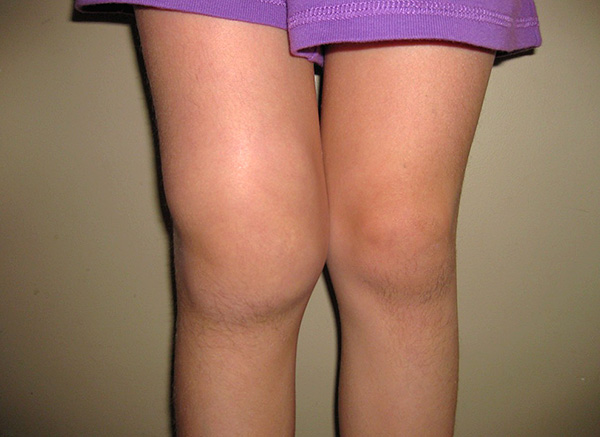
The acute phase can last for several months, after which a no less lengthy stage of “rest” begins. At this stage, all methods of clinical diagnosis show the absence of borreliosis pathogens in the body.
Late skin lesions appear as atrophic rashes all over the body. At the same time, large purple spots appear on the limbs, on which the skin dies over time.
But the most dangerous is precisely neglected neuroborreliosis, when the nervous system is affected. Among the dominant clinical manifestations in this case are noted:
- short-term severe pain in the face;
- paralysis of the upper or lower limbs;
- violation of the functions of the pelvic organs;
- loss of memory and mental abilities.
On a note
With such a development of borreliosis, it is at this stage that the strongest mental disorders characterized by aggressiveness and protracted depressions, up to memory loss, appear.
Borreliosis is especially dangerous for children (Borreliosis mites can bite them while playing in nature). School-age children are often infected, but preschoolers get sick less often after contact with borrelia.

The course and symptoms of the disease in children are similar to those in adults. However, children develop meningitis more often and more quickly. Since the nervous system is affected, even after complete recovery, almost 90% of children experience the following effects: sleep disturbances, depressive mood, unhealthy nervous reactions.
If a Borrelia mite has bitten a pregnant woman, then there are no particular complications. In the scientific literature there are no data on intrauterine infection with fetal borreliosis or pregnancy complications. Experiments on animals have shown that there is no direct relationship between the infection of the mother with borreliosis and premature birth or miscarriage, as well as various pathologies of the fetus.
What to do when a tick bites to prevent dangerous consequences
Lyme disease is excellent for treatment with broad-spectrum antibiotics (for example, tetracycline). Even the third, particularly advanced stage, responds well to treatment. But in order to protect yourself initially from a number of serious problems that may arise after a tick bite, it is better to foresee a set of preventive measures in advance.
Preventive actions should first of all be aimed at minimizing the likelihood of contact with ticks. Unlike tick-borne encephalitis, there is no vaccine for Lyme disease. Therefore, when you are in nature, you should avoid the most likely places of mass accumulation of ticks (paths of animals, old, overgrown with grass and bushes localities).
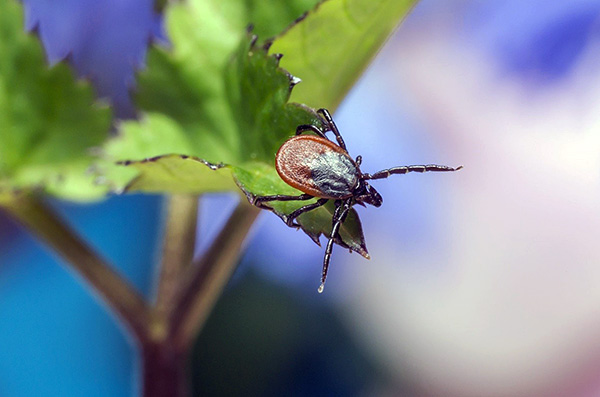
Do not neglect such methods of protection as repellents, treating their clothes and open areas of the body with them every time you are going to nature. The most important thing is to periodically carefully examine yourself and loved ones for the presence of ticks on the body.
If the tick is still stuck, it must be removed from the skin and must be removed as quickly as possible, and very carefully,so that the head of the parasite or its proboscis does not remain in the wound. The longer the borrelia mite sucks blood, the higher the chance of infection.
After removing the parasite from the body, the wound should be treated with an antiseptic (for example, an alcoholic solution of iodine, green paint or hydrogen peroxide). The extracted tick must be referred to a diagnostic center for research. Next, experts will prompt the algorithm of action in case the tick turns out to be infected.
Useful video: what's important to know about tick-borne borreliosis (Lyme disease)
What to do first when a tick bite

